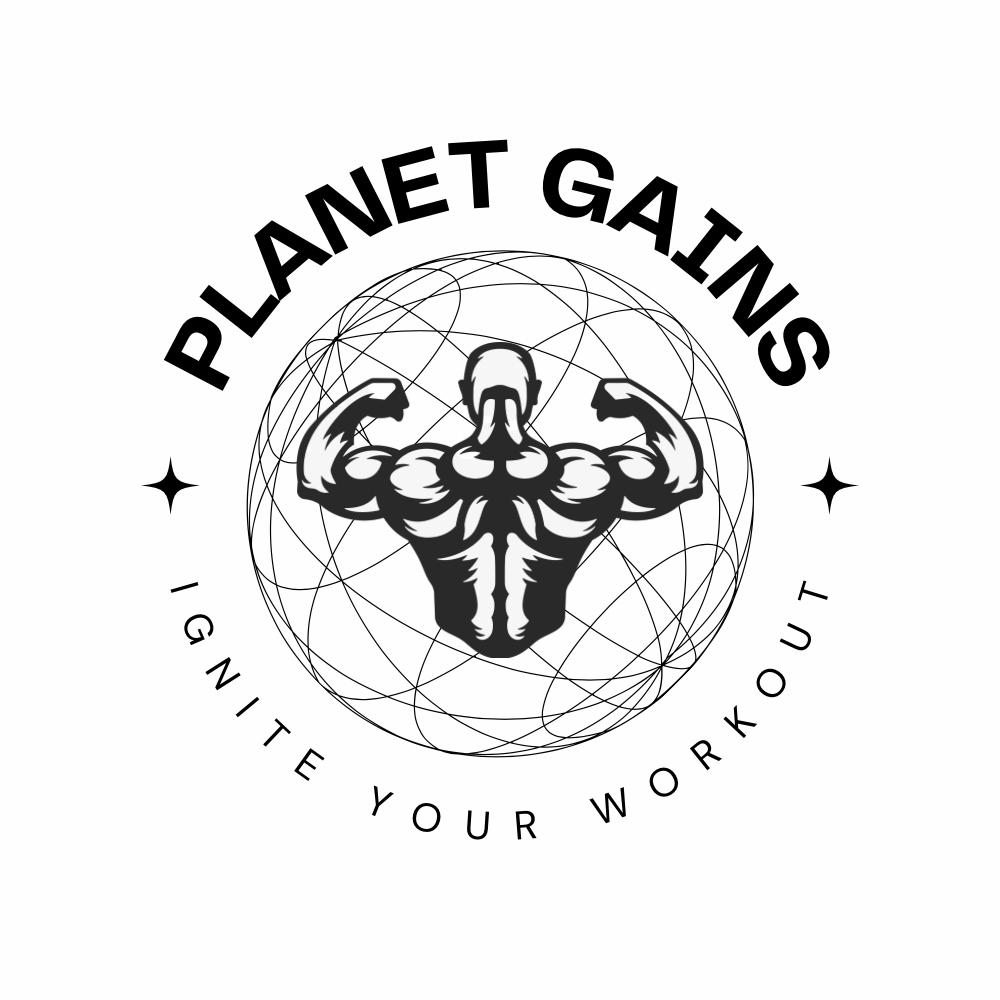📦 FREE Shipping
11 Epic Muscular Endurance Workouts 2024 (& How To Improve It)

One of those unsung components of fitness that truly enhances our everyday lives and athletic performance are Muscular Endurance Workouts. I like to think of it as the stamina my muscles have for continuous effort or repeated movements. It’s not just about how heavy I can lift, but rather how long my muscles can sustain an activity.
Incorporating muscular endurance workouts into my fitness regimen brings a host of health benefits. These workouts also contribute to overall muscle health, injury prevention, and even joint stability.
11 Key Workouts for Muscular Endurance
To boost your muscular endurance, specific workouts targeting upper body, lower body, and core are pivotal. Incorporating these exercises into your routine will strengthen muscles and enhance stamina.
5 Upper Body Workouts
- Push-Ups: I find push-ups to be a classic move for increasing endurance in the chest, shoulders, and triceps. For variation, I like to switch hand positions from narrow to wide to target different muscles.
- Dumbbell Rows: Using dumbbells, I perform rows to work out my back and biceps. Keeping my back straight and legs slightly bent, I pull the weights towards my lower ribs.
- Resistance Band Pull-Aparts: I use resistance bands to strengthen my shoulders and improve posture. Holding the band taut, I pull it apart horizontally, engaging my back muscles.
- Bench Press: When aiming for muscular endurance, I lower the weight to about 60-80% of my one-rep max and increase the repetitions. This works out my chest, shoulders, and triceps thoroughly. I like to combine this with my Chest CrossFit Workouts.
- Shoulder Press: Either with dumbbells or a barbell, performing a shoulder press works out my entire upper body and especially targets the deltoids.
4 Lower Body Workouts
- Squats: A fundamental exercise, squats primarily engage my quads, hamstrings, and glutes. I maintain a shoulder-width stance and squat down as though I’m sitting in a chair.
- Lunges: For my quads and glutes, lunges are excellent. I step forward with one leg, drop my hips to lower my body, and alternate legs. Keeping my torso upright is key to maintaining form.
- Calf Raises: To specifically target my lower leg muscles, I perform calf raises, standing straight then pushing up onto the tips of my toes.
- Deadlifts: While typically a strength-building exercise, lighter weights and more reps can translate to impressive endurance gains for my lower back, glutes, and hamstrings.
2 Core Strengthening Workouts
- Plank: Holding a plank position is actually one of my top exercises to target the entire core. I make sure to keep my back straight and hold the position for longer periods to build endurance. One of the CrossFit Ab Workouts that show results.
- Russian Twists: For my obliques and entire torso, I perform Russian Twists. I sit on the floor with my knees bent, lean back slightly, and twist my torso from side to side, sometimes using a medicine ball for added resistance.

Fundamentals of Muscular Endurance Training
When I focus on muscular endurance training, my goal is to increase the amount of time my muscles can perform a specific task. This not only involves performing more repetitions (reps) but also managing rest periods strategically.
Understanding Muscular Endurance
Muscular endurance is my muscles’ ability to exert force repeatedly against resistance for an extended time. It’s about how long my muscles can maintain activity before fatigue sets in. This capacity is crucial for both everyday activities and athletic performance.
For instance, when I engage in strength training with the aim of enhancing endurance, I adjust the load (weight) and volume (total number of reps and sets) to be lower and higher, respectively, than when I’m purely focusing on strength gains.
- Reps and Sets: For endurance, I use more reps per set, often ranging from 12 to 20 or more, depending on my fitness level.
- Rest Periods: I keep my rest periods short, typically between 30 seconds to a minute, to challenge my muscles and build endurance.
- Load and Intensity: The weights I lift are lighter than what I would use for building strength, generally around 40-60% of my one-rep max.

Components of a Solid Muscular Endurance Program
For a well-rounded endurance program, I consider the following elements to ensure progression and prevent plateaus:
- Progressive Overload: I gradually increase the reps or the number of sets over time to challenge my muscles continually.
- Variety in Exercises: I include a mix of exercises that target different muscle groups to improve overall muscular endurance.
- Consistency and Regularity: I maintain a regular workout schedule, hitting each muscle group at least twice a week.
- Balanced Intensity: I balance intensity by interspersing heavy lifting days with lighter endurance-focused sessions to avoid overtraining.
Designing Your Workout Routine
When I create my muscular endurance workouts routine, I focus on careful exercise selection, the right number of sets and repetitions, and integrating ample rest for recovery.
Exercise Selection
In designing my workout, I first consider which muscle groups I aim to enhance for endurance. Here’s how I generally categorize my exercises:
- Upper Body: Push-ups, pull-ups, and dumbbell presses target my chest, back, and shoulders.
- Lower Body: Lunges, squats, and deadlifts focus on my legs and glutes.
- Core: Planks, Russian twists, and leg raises ensure my abdomen and lower back are engaged.
Determining Sets and Repetitions
The hallmark of my muscular endurance training lies in high-repetition, lower-weight sets:
- Reps: I aim for 15-20 reps per set to push my muscles to maintain performance over time.
- Sets: I usually perform 3-5 sets of each exercise to challenge my muscular stamina fully.
Here’s a simple table I use:
| Exercise Type | Reps | Sets |
|---|---|---|
| Upper Body | 15-20 | 3-5 |
| Lower Body | 15-25 | 3-5 |
| Core | 20-25 | 4-6 |
Incorporating Rest and Recovery
Without rest, my muscles can’t recover and build endurance. Here’s what I keep in mind:
- Between Sets: I rest for 30–90 seconds to ensure my muscles are prepared for the next set without cooling down too much.
- After Workouts: Aiming for at least 24–48 hours before targeting the same muscle group again allows for necessary repair and growth.

My Experience with Muscular Endurance Workouts
In my fitness journey, I’ve discovered the significant benefits of incorporating muscular endurance workouts into my routine. I included exercises for endurance, and I noticed a marked improvement in my ability to perform activities over time without fatigue.
For instance, I started integrating circuit training into my workouts. A typical circuit might look like this:
- Push-ups: 3 sets of 15 reps
- Squats: 3 sets of 20 reps
- Planks: 3 sets of 30-second holds
- Bodyweight Rows: 3 sets of 15 reps
I made sure to have minimal rest between these exercises, typically about 30 seconds. This approach not only tested my muscle endurance but also kept my heart rate up, benefiting my cardiovascular health.
Another favorite endurance exercise of mine is long-distance running. With consistency and gradual increases in distance, I now enjoy the meditative rhythm of longer CrossFit running workouts, relishing the improved stamina that has come over time. Now it’s your turn. 😉

Frequently asked questions about muscular endurance workouts
How do you train muscular endurance?
To train muscular endurance workouts, I focus on low to moderate-intensity exercises with high repetitions. Specifically, I aim for sets that involve many reps (often more than 15) using a weight that’s about 40-70% of my one-rep max. I also incorporate activities that require sustained effort, such as cycling or swimming.
What is 1 example of muscular endurance workouts?
A classic example of muscular endurance workouts is the plank exercise. When I do a plank, I maintain a push-up position for as long as possible, engaging my core, arms, and legs. This exercise targets endurance in the core muscle groups.
Can you train muscular endurance everyday?
While it’s possible to train muscular endurance every day, I prioritize rest days to allow muscle recovery. I balance my muscular endurance workouts throughout the week, sometimes alternating muscle groups or types of exercises to avoid overtraining and reduce the risk of injury.
Which routine is best suited for muscular endurance?
A routine best suited for muscular endurance workouts includes a variety of exercises targeting different muscle groups. For instance, I might combine bodyweight exercises like push-ups, sit-ups, and lunges with resistance training using light to moderate weights.
Does muscle endurance build size?
Muscle endurance workouts isn’t primarily aimed at increasing muscle size (hypertrophy). Instead, the focus is on improving the muscle’s ability to perform over time. However, I’ve noticed that regular muscular endurance workouts can lead to some muscle toning and definition as a result of consistent and prolonged effort.
Did you like these Muscular Endurance Workouts? Let me know in the comments. Make sure to also read about Endurance Swim Workouts and Andrew Huberman Pre Workout Routine.





